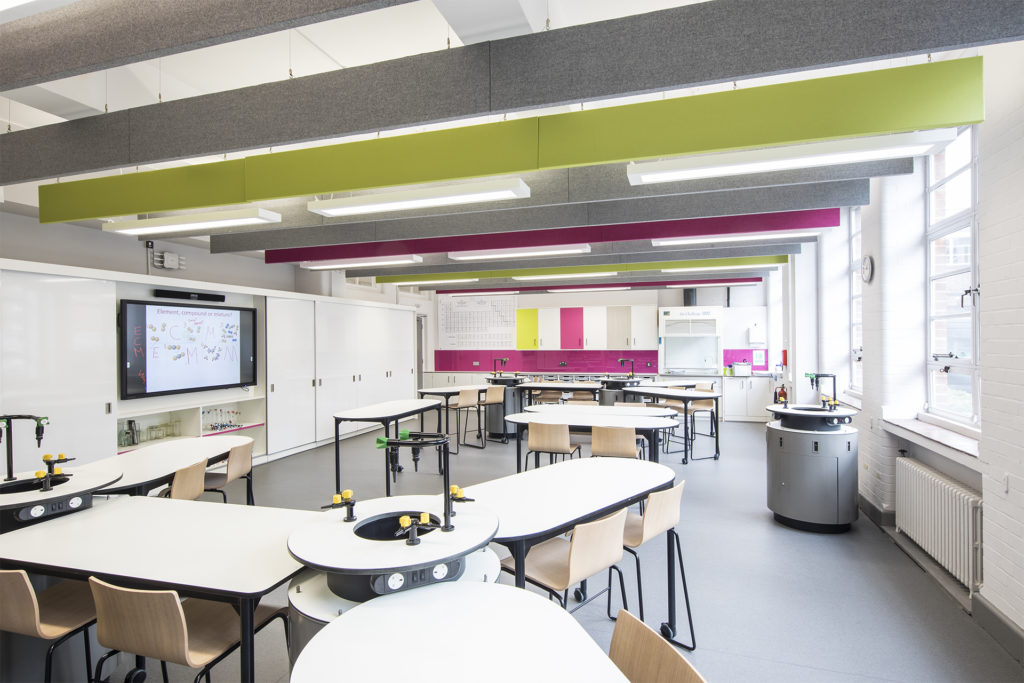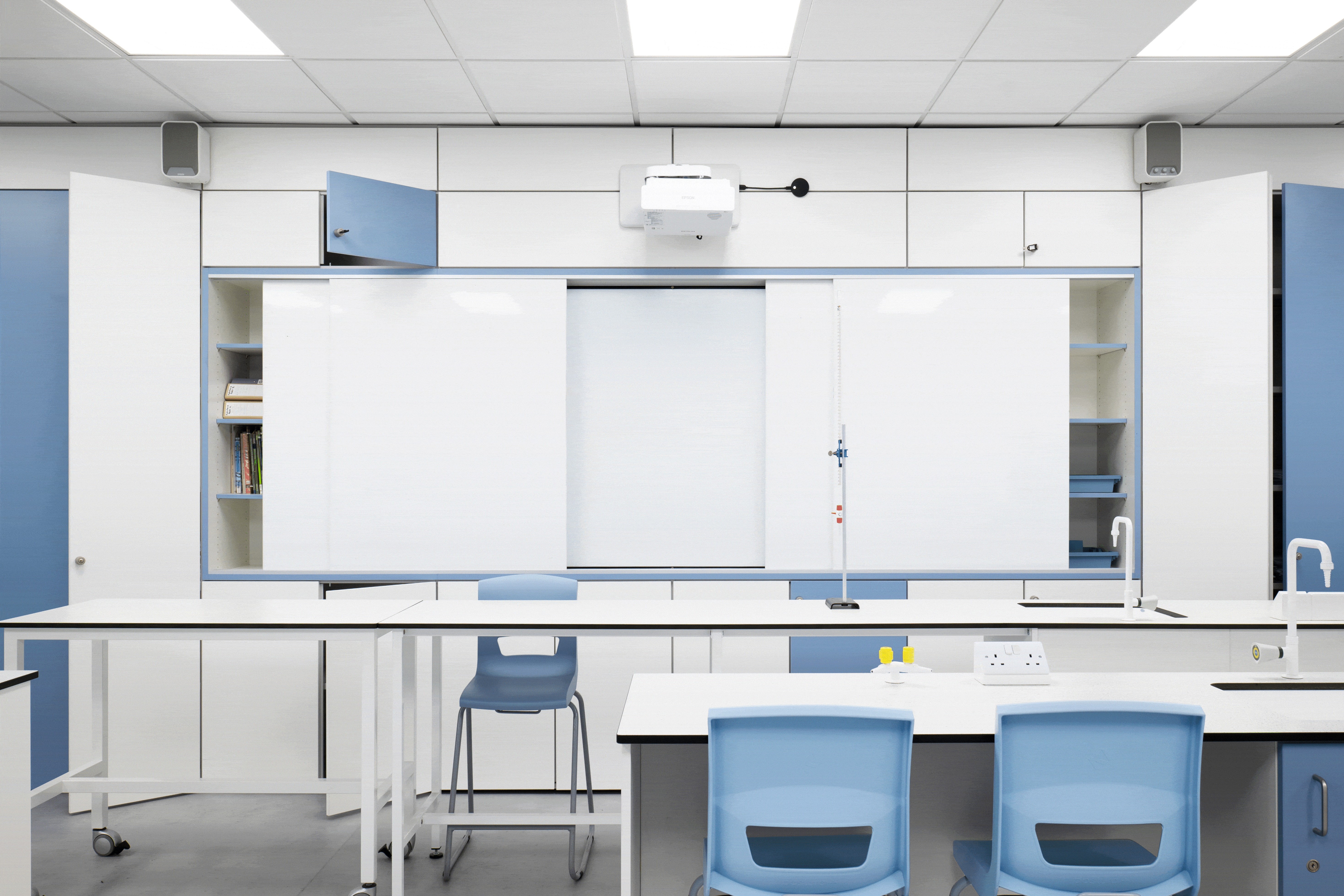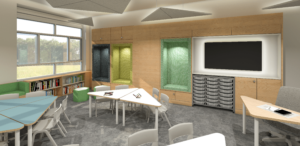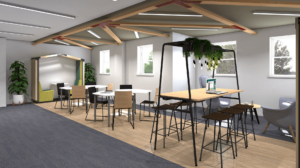Schools shape the world of tomorrow. Today’s students will be the technicians, engineers, epidemiologists and scientists of the future. And whilst teachers play a fundamental part in developing these roles, supporting and guiding students along their journey, the educational environment is crucial to the complete learning experience.
Practical science, and a science lab that both supports and encourages learning is key to any good science lesson. The how’s, what’s, and why’s from childhood can fuel further questioning and investigation when transferred to the school science laboratory. The overlap of real-life experience and practical science allows for the discovery of answers. A regular pragmatic approach allows students to immerse themselves in the possibility of a future career in the sciences. Engaging students now, and supporting them through their school science studies, is crucial. Stimulating science lessons allow children to experience scientific progression first-hand, witnessing and taking part in the most exciting hands-on elements of this exhilarating curriculum.A well-planned science laboratory creates a working environment that not only benefits students but their teachers too. Practitioners can feel confident in their workspace and this is then projected into lessons, establishing a better learning environment for all.Here are the 10 most essential points for consideration to ensure that any school laboratory is effectively engaging and inspiring the next generation of scientists:Practical science should take precedenceA science lab, first and foremost, is a place for experiments. Investigations are what make science a subject like no other. The enjoyment from practical tasks is not to be underestimated; it can often be the driving force behind the decision to take learning to a higher level. Students thrive in the unique environment of the science laboratory and the workspace must reflect this desire for a hands-on approach. Government guidelines recommend that lessons incorporate practical experiments for at least half of their duration, so a science lab that is always ready to spring into action is crucial. Careful consideration should also be given to the flexibility of the space. It is essential to provide opportunities for solo practical experiments as well as the provision for collaborative group work. Keeping these points at the forefront of any design process will guarantee a well-planned laboratory that allows practical science to take a strong lead in the delivery of the curriculum.
Here are the 10 most essential points for consideration to ensure that any school laboratory is effectively engaging and inspiring the next generation of scientists:
A place to study theory shouldn’t be an after thought
As important as practical science is, scientific theory is of equal importance. Designing a science lab that comfortably allows for the delivery of both theoretical and practical components is key. Gaining knowledge and understanding of the fundamental principles allows students to gain confidence in all aspects of the subject. A school’s facilities must be conducive to effective learning: note-taking, the use of textbooks, and the drawing of diagrams, all need appropriately designed workspaces to be efficiently undertaken. A well-designed lab allows for the dual use of theoretical teaching and practical investigations. It is important, therefore, to consistently consider these two applications when designing the learning areas.Make sure the seating arrangements complement the classroom facilitiesA common difficulty often confronting the design team of a school science lab is the seating arrangements of the students. A good sight-line from pupil to teacher is essential. But other factors also need to be considered. Whole class practical demonstrations require all children to not only see the teacher but to also see any experiment that is being exhibited. Clear instruction is always essential and so a good view is most certainly a requirement. Individual presentations may regularly feature within lessons and to engage the whole class it is important that the design allows for the involvement of all pupils. Viewing areas for students can be a solution to some of these issues, however, it is still important that all students can see clearly from their seats. There is also a particular need for a clear view of theory notes, drawings, and diagrams, which may be displayed in a number of ways. A well-designed lab should cater to all of these needs and ensure that the teaching of science flourishes in an effective learning environment.
The teacher’s space is not just behind the desk.
Whilst it’s clear that the delivery of a science lesson can be enhanced by the laboratory in which the teaching takes place, it is important that the practitioner is not forgotten during the design process. As previously mentioned, a dedicated area for the teacher where demonstrations of practical experiments can take place is essential. This must be well designed to allow a consistently clear view for all pupils to encourage and motivate them throughout the lessons. Provisions for teachers’ resources need to be considered at the design stage as easy access to storage solutions can aid with the smooth delivery of sessions.The teacher’s personal space shouldn’t be limited to the small pocket of carpet behind the desk at the front of the room. Movement around the class is essential and designers should work hard to provide a clear pathway within the laboratory. This allows teachers to undertake regular observation and correction and also enables the opportunity for one on one discussions with students as they work.An enjoyable working environment for teachers can have benefits for figures of staff retention. A desirable place to work can attract new teachers to the school and assist in ensuring the long term commitment of those staff currently employed. So, when designing the facilities to be included in the new school laboratory, make sure they inspire both teachers and pupils alike.Seamless integration of technology is an essential requirementSince technology is an integral part of the teaching of all subjects, it is recommended by the Good Practical Science report form the Gatsby Charitable Foundation that digital technologies should ‘support and enhance practical experience’ during the teaching of science. This makes it an important design consideration for the laboratory. Interactive whiteboards are commonplace in the classroom and their positioning remains essential. In support of this whole-class technology, computers are valuable for research, data logging, and simulating experiments, so suitable connection points and a reliable WiFi service is paramount. With the use of technology ‘hard-wired’ in our daily lives it is important that our school labs offer the latest hi-tech equipment to ensure readiness for the future. Science within schools should be setting the trend for the use of new and innovative procedures.Flexibility and total control of lightingA project carried out by The University of Salford and funded by the Engineering and Physical Sciences Research Council concluded that physical characteristics, including light, temperature, and air quality, all play a measurable part in the learning outcomes of pupils. Light was found to be a significant influencing factor. And whilst it may not be surprising to learn that external factors within the classroom can have an effect on learning overall, the subtleties that natural lighting produces, and their positive effect on learning, should not be overlooked. It is important to have a well-lit room for clear sight around the classroom. Science experiments can often come with an element of risk and so it is essential that laboratories have adequate illumination. Whilst artificial light is sometimes necessary, there is no substitute for the presence of natural light. The added benefits that a natural light source can bring to everyone in the environment, with its unique colours and soft, diffused quality, cannot be underestimated.
Design elements including large windows in a north-facing lab can provide natural lighting with uniform daylight and minimum glare. South-facing laboratories may benefit from smaller windows with blinds and external shading. This will allow for an adequate balance of natural light, with its fluctuating levels throughout the day. East and west-facing labs with larger windows have a low risk of glare. Using clear glazing in these windows will allow for the increased benefits of natural light.Where artificial lighting is needed to supplement the natural glow, consideration should be given to its placement. Deeper classrooms, for example, will need a variety of light sources to ensure even distribution when further away from the windows. The winter months can often call for extra bulbs as the light fades earlier in the day. But the design process should allow for the placement of good quality fixtures alongside the natural lighting provided by windows. This will ensure the creation of a well-lit learning environment that will have a positive effect on students and their learning.
Maintain a productive, well ventilated comfortable environmentPast studies have found that as temperature and humidity increases in the classroom so does the discomfort of pupils. This leads to a decrease in attention span, causing concentration to suffer. During the design process, this factor needs to be kept in mind. A hot classroom causes students to work less effectively, so it is important to maintain an ambient temperature at all times. The learning environment needs to support students through their studies, not hinder them, therefore optimum ventilation and temperature control is essential.It is important to remember that the sun and the orientation of the lab has a big impact on the temperature and environment within the learning space. A north-facing lab allows for better temperature control as no direct sunlight heats the room. Conversely, east and west-facing laboratories are less affected by the sun. South-facing rooms will, however, be affected by direct sunlight unless appropriate design solutions are implemented.
Fluctuations in temperature can be difficult to control and direct sunlight influences this. External shading, blinds or even shrubbery planted outside the window, can all offer respite from the sun, reducing the risk of the classroom overheating.A place for everything, and everything in its placeScience lessons require a lot of equipment. Bunsen burners, test tubes, beakers, flasks, are all bulky items that need a home somewhere in the science lab. A huge design consideration must be the storage of this equipment. The probable dual use of the science lab, for both theory and practical science, means an effective storage solution for equipment is crucial. Storage provisions must be an integral part of the design process.
Pupils’ equipment should also be a considered factor. Once theoretical science work has been undertaken it is important that bags, coats, and sports kits aren’t littering the floor and creating potential hazards. These items need to be stored away so accidents are avoided during practical experiments. Clever design means the needs of the classroom, as well as the students, are met.What should the science lab look like?
Previous studies have found that learning areas with sparse surroundings and little distraction allowed children to obtain higher learning scores than those in classrooms with high visual distraction. However, another study reported that environments with varied surroundings with diverse colours allowed for co-operative behaviour among pupils. The University of Salford found that a balance to the levels of visual complexity was best. Ceiling design and floor layout can all add diversity to the learning space which is beneficial to pupils and their learning experience. It is important to remember, however, that over stimulation will have a counterproductive effect on learning.
Display areas allow for personalisation and ownership of the room which can increase pupil participation and aid the learning process. But these areas must not be allowed to clutter or take over the science laboratory and so must be carefully designated.Most importantly, stay safe!Safety in a science lab is of utmost importance. Dangerous chemicals, fire, gas, and high temperatures can all be commonplace in a lab on a daily basis. Safety, is therefore, a fundamental consideration in the design process. The spacing of furniture should allow pupils and teachers to move safely around the classroom. This is of particular relevance during practical experiments where the interaction between pupils could cause harm if adequate leeway is not provided. Fire escapes must be easily accessible for all. It is vital to consider wheelchair users in these plans, ensuring paths and doorways are wide enough to accommodate all pupils. It is important to remember, however, that balance is needed. This is a science laboratory, intended to foster and nurture a love of science and the environment. And whilst due care and diligence should always be taken, particularly at the design stage, students’ learning should not be restricted by an overzealous approach to health and safety.
Upon dissecting the essential requirements for a school science lab, the common link between all considerations is flexibility. The overlap of practical science with theory, the use of the space working for both teachers and pupils, along with the safety, technology, seating, and lighting, means that close attention should be given to all aspects of the lab. In doing so it is possible to realise the goal of a flexible learning environment that works for everyone. High quality, durable materials that are appropriate for the task should be incorporated into a fantastically designed space. This will ensure that your investment in a new science lab is money well spent. And whilst the investment initially appears to be providing simple fixtures and fittings, if the budget is spent effectively, the payoff is an inspirational generation of high achieving scientists, engineers, and technicians.
Envoplan can help you create a learning environment that positively impacts learning



